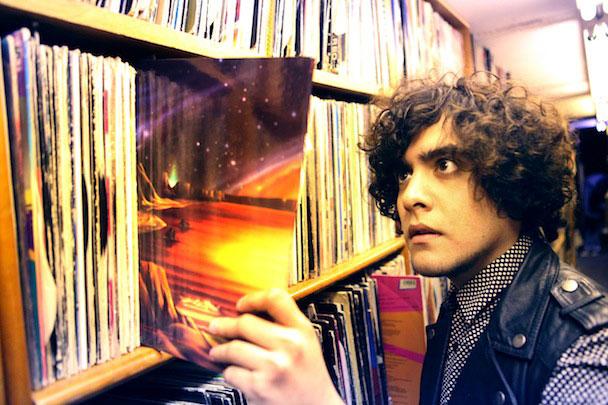Let’s first be clear about one thing: chillwave – at least in its musical construction – is not a new invention. The futuristic-sounding effects, the vocals on top of keyboard on top of keyboard on top of drum machine composition and the constant modulation between major and minor keys and all of these were hallmarks of ’80s pop rock long before they appeared on any indie label in the past few years. Strip away the lyrics on many tracks of the chillwave persuasion, and they would sound like improvised tributes to Toto or The Police, which leads to the vaguely funny realization that even Europe discovered that territory long before Neon Indian knew it existed.
Still, lack of originality doesn’t doom a genre; it just demands a higher level of talent and a unique vision. On those counts, Neon Indian’s sophomore album, Era Extra?a, is mostly successful. A follow up to 2009’s Psychic Chasms, the new album takes a few risks, but plays best when Neon Indian sticks to his formula: set the mood, build layer by layer and keep the songs short.
Neon Indian don’t shy away from directly acknowledging that its various synthetics sound like a well trodden caricature of a high-technology future. With song titles like “Future Sick” and “Suns Irrupt,” he’s not so much winking at the listeners as slapping them straight across the nose. It’s probably impossible to know whether the backing to “Polish Girl” is supposed to sound like a messianic Pac-Man dying and reanimating with each four bar phrase, but the ultimate effect is an entirely thematic nostalgic filter over the four-and-a-half minute track.
Making a song sound like a computer, a robot or an arcade game is easy with the instrumentation that’s being used, but Era Extra?a shines most when it sets a different tone entirely.
On “Fall Out,” the album’s closest approximation of a ballad, a Styxian opening precedes a set of lyrics that would not be out of place in the fog-filled climactic prom scene of a John Hughs movie: “Molten asphalt/ Running start/ Wounded tongue tied from my/ Heatstruck heart.” A similarly beneficial thematic shift occurs on the title track, “Era Extrana,” where Neon Indian attempts to mimic the sounds of the Old West. First, a desertscape is painted by an unaccompanied, mournful keyboard. Then a rapid, syncopated bass line kicks in, nailing the feeling of a lone horseman galloping across the plain.
The change of pace on those two tracks is welcome and well executed. But Neon Indian runs into problems when it strays too far from its layered, hook-y groove. Three songs on the album, “Heart: Attack,” “Heart: Decay” and “Heart Release,” are instrumental snippets lasting less than two minutes each. Though the three are clearly meant as a set, they break up the album unnecessarily. Two minutes simply isn’t enough time to build a coherent song, so the three tracks come across as the indie equivalent of skits on a rap album, which is to say pure fillers.
But at least those are kept short. “Future Sick,” the weakest track on the album, is just as vacant, but several minutes longer. It’s almost too generous to say that its closest relative is an unfunny SNL digital short; at best, it’s “Space Olympics,” except written by Andy Samberg’s emo teenage cousin.
Even through low points like that, however, Era Extra?a recovers thanks to it’s high degree of self-awareness. The biggest tip-off that Neon Indian knows exactly what it’s doing is the title of the album, which means both “strange era” and “it was strange.” Is Era Extra?a describing how people in the ’80s imagined the future, or is it referring to how we view that time now? The logic is circular, but the answer is both.
Four stars out of five.














